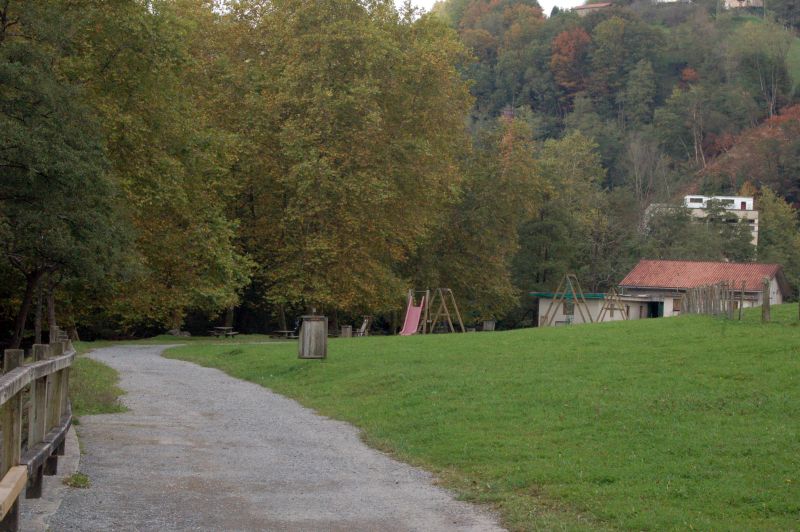
Puntos de Interés

Municipality
Santa Cruz de La Palma

Santa Cruz de La Palma is a locality and municipality on the island of La Palma, belonging to the former aboriginal canton of Tedote. It is located in the province of Santa Cruz de Tenerife (Canary Islands) and is also the capital of the island. This municipality is located in the central area of the eastern slope of the island, between the geographical features of Risco de la Concepción and Barranco Seco, which is why much of this port town is built on the basaltic materials of the Caldereta volcano.
The city of Santa Cruz de La Palma was founded on 3 May 1493 by Alonso Fernández de Lugo, under the name of Villa Apurón. Although it was already known as Santa Cruz de La Palma in 1510, as 3 May is commemorated as Santa Cruz day.
In pre-Hispanic times the island was populated by the Benahoarita people and its territory was divided into 12 regions or cantons, with Santa Cruz de La Palma being located in the canton of Tedote. After the conquest of the island, this enclave was chosen as the capital, as ships used the bay as a port. It also offered plenty of drinking water and was sheltered from the winds.
In the north of the present town is the Cueva de Carías, which was the administrative headquarters of this canton from the time of the Benahoaritas, and even after the conquest, it remained the seat of the Island Council. The island's second religious building was built next to this cave, the Shrine of La Encarnación, still preserved and the site of the first night of the Virgen de Las Nieves festivals in honour of the island’s patron, celebrated every 5 years.
Given that the port of Santa Cruz de La Palma was the last port on the route to the Americas, it became the third most important port in Europe at the time, leading to the town fortifying itself to protect both goods and ships as well as the booming population. Despite the fortifications, there were several attacks by corsairs, although the most notable was that of the Frenchman François Le Clerc (Peg Leg), who razed the town to the ground in 1553. As a result, only a few fortifications have been preserved from the original walled city, such as the Castle of Santa Catalina and the Castle of San Fernando.
During the 16th and 17th centuries, the island reached its economic and cultural splendour thanks to the cultivation of sugar cane, the transit of goods and the shipyards. Therefore, in 1558, the first Juzgando de Indias was founded, in which all ships travelling to the colonies had to be registered. It was during these centuries that most of the buildings that make up the town's interesting architectural heritage were built, where the dark colours of the volcanic rock contrast with the white of the walls and the brown of the wooden balconies. Some examples are the colonial-style manor houses and palaces, made of basalt cobblestones, the Renaissance ensemble of the Plaza España, where the town hall, the fountain or the Matriz de El Salvador parish church are located. Other places of interest are the Church of Santo Domingo, the Insular Museum, the Circo de Marte theatre and the Barco de la Virgen, now a naval museum.
Over the ensuing centuries, Santa Cruz de La Palma established itself as a city of great renown in the construction of boats, becoming, in the 19th century, the first city on the Canary Islands to have electricity.
Today, the city's economy is centred on the services sector, and is home to many essential services, such as the hospital and the island council. There are also various services associated with tourism and commerce, thanks to the port, which connects with the mainland, Tenerife, Gran Canaria and Lanzarote.
Although the gastronomy of the Canary Islands has ingredients and dishes shared by all the islands, such as gofio (a roasted grain flour often served as a savoury porridge-like purée), papas con mojo (skin-on potatoes with spicy sauces) and bienmesabe (a sweet, almond-based mousse), some unique dishes have emerged in La Palma. They include escacho, a very popular dish in Santa Cruz, made with gofio loaf, garlic, pepper, potatoes, cumin and different types of vegetables. Also well-known are the cheeses of La Palma, with protected designation of origin status since 2001, made from traditionally reared goat's milk. The Vieja and Alfonsino are among the most popular fish. Among the desserts, rapadura is the most traditional, a recipe that dates back to 15th century using gofio, palm honey and sugar.
The patron saint festivals of Santa Cruz de La Palma are held on 3 May, commemorating the founding of the town. Locals compete to decorate the crosses that are commonly found on the streets, squares and corners of the municipality. A series of cultural events are also held., like the masquerade parade.
Carnaval in spring is also a major event on the island, especially the Día de los Indianos (Day of the Indianos), when islanders dress in white, with traditional Cuban attire and don Panama hats, caricaturing the Canary Islanders who emigrated to Cuba, and who on their return to the island boasted of the ostentation and wealth they had attained. On this day, Palmeros wait until midday for the throwing of talcum powder battle marking the start of the festival. All this takes place to a soundtrack of the Cuban rhythms of guarachas and guajiras, while revellers enjoy traditional food and drink from both islands.
Finally, the Lustral festival celebrating the Virgen de las Nieves, La Palma’s patron, are held every five years with an extensive programme of education and entertainment.


